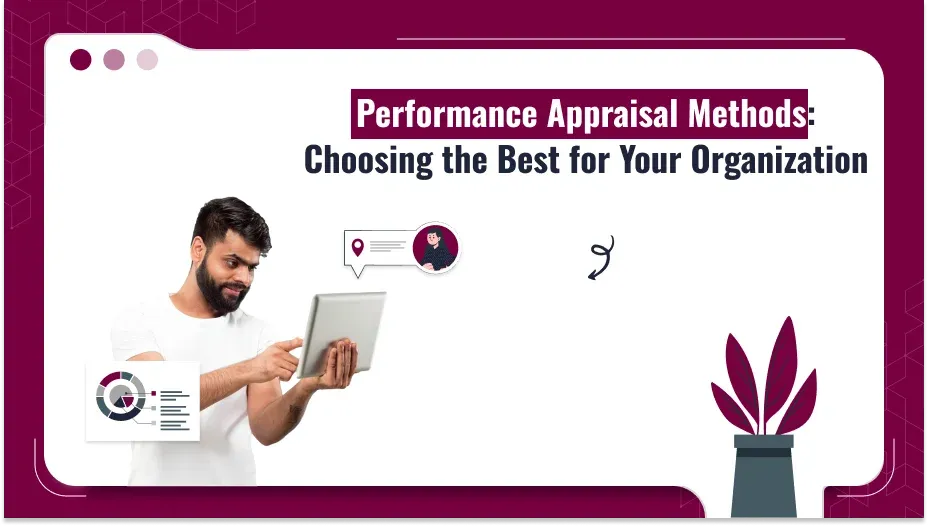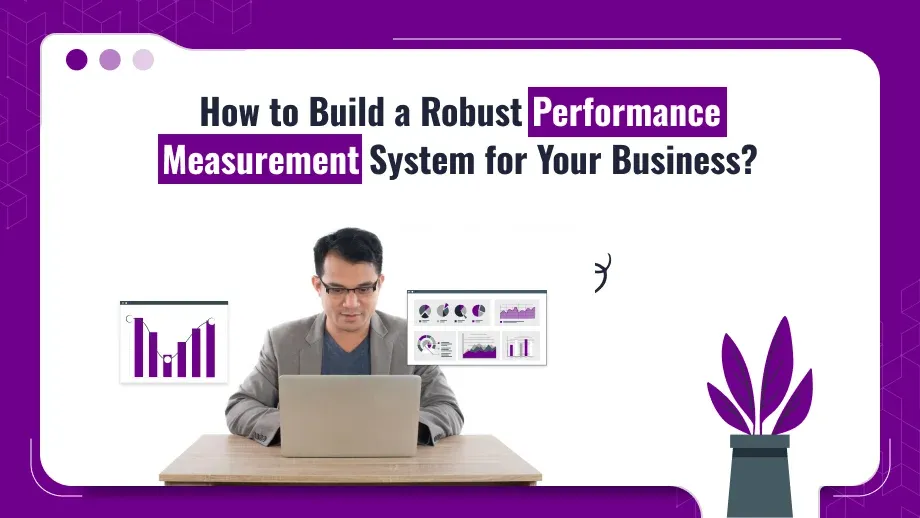
A performance appraisal methods is a backbone of managing employee performance, as it enlightens one about valuable insights, sets down clear expectations, and harmonizes individual contributions to organization goals. But whether such a process is effective, fair, and motivating for employees depends entirely on the performance appraisal model adopted. Understanding traditional methods of performance appraisal and the performance appraisal methods that exist today will provide an added advantage as you seek to tailor the right methods for your organization. This guide is thus informative in explaining these appraisal methods in detail, along with providing insight on how to implement a robust appraisal process.
Introduction: Importance of Performance Appraisal in HRM
It is, therefore, essential to have a structured performance management system in HRM in the context of HRM within an ever-changing business landscape for the monitoring and management as well as growth enhancement of employees. Used effectively, the performance appraisal process in HRM immensely benefits not only the organization but also employees at large through continuous development, motivation, and productivity. Whether it is an evaluation process of individual contributors or team leaders, therefore, the right methods of performance appraisal in HRM remain the key to organization success.
Tradition of Performance Appraisal
Traditional methods have been operational for decades. They are focused on core performance metrics and individual contributions. Some of the mentioned methods may seem less relevant in this high-tech environment, yet many of them are still applied, primarily in routine roles without a need for any complex appraisals.
1. Graphic Rating Scale
This is one of the simplest methods, where the employees can receive scores on a numerical scale for different criteria: the quality of work done, punctuality, teamwork, and initiative.
Example of performance appraisal in HRM: One could rate an employee from 1 to 5 for each metric and encourage scores on higher end of scale to reflect an employee’s better performance. This method gives a quick snapshot but generally lacks depth, particularly for those roles that require creativity or complex problem-solving.
2. Checklist Method
Managers respond to a set of yes/no questions that seek answers concerning an employee’s performance in specific areas.
It is easy to compare the performance of many workers on a team, but it tells you little about what type of worker an employee is or how well they may fit in with a team.
3. Forced Distribution
Use categories of performance, like “top performer” and “needs improvement,” and often place on a bell curve distribution.
Although it promotes differentiation, this approach will induce competition, and hence, may demote the morale of the employees if members of the team feel they are unfairly categorised.
4. Essay Method
Essay method is when managers perform a comprehensive analysis of an employee’s strength and area that need improvement as well as key accomplishments.
This approach is supportive because a manager can explain reasons the employee should be retained with specific examples; hence, it is rather time-consuming and biassed
5. Paired Comparison
In paired comparison, employees are rated against each other in direct comparison with regard to performance factors.
This method is pretty efficient in ranking a small group of employees; however, for larger teams, it can prove to be inconvenient. Performance Appraisal Feedback in this model could be pretty useful, especially with regard to promotions and needs for training.
These more traditional approaches of performance appraisal methods are obvious, often better suited to standardised roles or smaller teams but not very flexible in dynamic fast-paced workplaces.
Contemporary Approaches to Performance Appraisal
The contemporary approach to appraisals focuses on adapting changes in the environment, continuous improvement, and development. Often linked with HRMS & payroll software, these approaches, along with appraisal templates, are intended to allow managers to provide ongoing feedback and tailor appraisals to respective goals and skills.
1. Management by Objectives (MBO)
MBO is a system whereby employees and managers agree on specific, measurable objectives to be pursued and reviewed over time.
Performance Appraisal Model: Because MBO centres goals on concrete outcomes, it emphasises responsibility and ability and thereby links subordinate efforts to higher-level organizational outcomes, making it suitable for jobs whose outcomes are readily defined.
2. 360-Degree Feedback
In 360-degree feedback, performance feedback is obtained from a multilateral source, that is, supervisors, peers, reporting employees, and occasionally, clients.
The holistic approach to Performance Appraisal Feedback allows the reviewer to give him a very general idea of the employee’s capabilities and promotes teamwork. It is very workable for managerial or collaborative work environments where interpersonal skills or what has been espoused between peers is highly valued.
3. Behaviorally Anchored Rating Scales (BARS)
This is a hybrid approach combining the traditional rating scale with behavioural examples to keep appraisals objective.
The Employee Performance Appraisal through BARS correlates ratings with job- related behaviours that link them to certain specific standards for clear evaluation of performance. This kind of appraisal, therefore, enhances feedback that tends to be both constructive and employee-behaviour-oriented.
4. Psychological Appraisals
This type focuses on the psychological characteristics of an employee, such as interpersonal skills, motivation, and leadership potential. It provides a good report on the future of the employee within the organization.
Together with other testing tools, psychological appraisals are useful tools for finding those who can be leaders or those who need soft skills training.
5. Assessment Centers
The employees undergo simulation exercises, role-plays, and problem-solving experiences carried out under conditions very close to the real work situation. Managers can observe how the employees use their skills in doing a task.
Performance Management Tool: This method also is resource-intensive, though, and may be best for direct managerial or leadership skills measurement because of the best way this reveals how employees behave under changed conditions.
Modern methods often rely on the use of performance management tools or software for the purposes of data collection, analysis, and continuous feedback. These tools, typically part of HRMS & payroll software, do make it easier for managers to follow a constant check and also increase the chances of workers’ competencies in real time.
Ready to elevate your performance evaluation process?
Discover the best appraisal methods to unlock your team’s potential and drive results.
Types of Performance Appraisal Methods in HRM
A combination of various performance appraisal methods can be very effective; some hybrid approach provides a complete types of performance appraisal in hrm.
Quantitative Methods:Graphic rating scales and forced distribution are quantifiable approaches focusing on placing numerical ratings against specific attributes.
Qualitative Methods :Essay and checklist methods come under qualitative methods as they demand descriptions or binary feedback.
Cooperative Methods: MBO and 360-degree feedback offer for the involvement of various stakeholders on a performance development and teamwork focus.
Selection of Proper Performance Appraisal Types in HRM
It depends entirely on the size of the organization, job types of the employees, and available resources.
The process of performance appraisal in HRM has been regarded as a multi-step process involving preparation, appropriate and timely feedback, and structured appraisals to be effective.
1. Setting Targets
For every employee, competency goals are set and determined and agreed upon by the manager to support the achievement of greater organization goals.
Sales may align their goals around quarterly revenue while marketing would do so around lead generation metrics. With a performance management tool, tracking and monitoring can be tracked live.
2. Continued Monitoring and Feedback
Continuous feedback, rather than waiting for an annual review, allows staff to learn by adjustment instead of just in the appraisal setting. Regular feedback sessions keep the employees engaged with quicker course corrections.
Most HRMS & payroll software platforms have available tools for continuous performance monitoring, enabling managers to provide real-time feedback that supports ongoing development.
3. Evaluation and Documentation
Managers make evaluations based on the chosen method of appraisal, which are documented performance metrics and observations.
Sensitive documentation can provide transparency and support future actions, such as promotions or salary increases.
4. Feedback and Development Planning
Performance Appraisal Feed-back discussions can serve as an opportunity to remind the employees of their strength areas and those which need improvement and to develop new objectives.
Employees and management can partner together in the development of a tailored development plan that may include training or mentoring where appropriate.
5. Reward Performance and Follow-Up
Such employees may be promoted, granted bonuses or some other reward, depending upon the policy of the company. Follow-up ensures feedback is actionable and trends are monitored over time.
Each step in the process of performance appraisal within HRM ensures that employees are judged fairly and given support needed to continually improve their performance-this is a very sound way to encourage a culture of continuous learning and improvement.
Performance Appraisal in HRM: Examples
Every company and industry will have their own examples of an employee performance appraisal methods , but they all fall under one of three types.
- Annual Review: The most common type of appraisal is the annual review. The annual reviews show a comprehensive view of the overall contributions made by an employee during the year. Though traditional, it is useful for summative evaluations, too.
- Quarterly Feedback:Quarterly reviews are reviews conducted in shorter periods, every quarter. This is used when reviewing progress made on certain projects or goals, especially if in a fast-paced type of industry.
- Project-Based Appraisals: A project-based appraisal is an appraisal based on specific projects assigned to the employee. It promotes contribution, skills, and ability to meet deadlines on behalf of the employees. The main aim of these appraisals is project-driven roles-technology or consulting.
These above examples deliver various appraisal approaches, hence providing the organization to make the appropriate choice in terms of format; this depends on their requirements and culture.
Maximizing Performance Management Tools and HRMS Software
Using a performance management tool or an integrated HRMS & payroll software streamlines the performance appraisal methods and brings the following advantages along:
Automation: Data entry, reporting, and tracking will be automated that saves time and reduces the burden of administrative work.
- Data-Driven Insights: This helps the managers track quantitatively over time, to identify trends, recognize patterns, and take data-driven decisions.
- Customization: Most software tools allow an appraisal template to be customised, which can help an organization make it their own based on what is necessary for their specific roles and teams.
Real-time monitoring ensures that there is always ongoing improvement as well as the opportunity for managers to provide immediate feedback where it is most needed.
Some of these tools assist in an appraisal process that is more consistent, efficient, and insightful, thus very critical in today’s data-driven workplaces.
How to Choose the Best Performance Appraisal Model
The selection of the right performance appraisal model is a function of specific organizational objectives, team size, and available resources.
- Organization Size: Small organizations with simple structures prefer traditional methods, whereas large organizations reap significant benefits from a comprehensive method like 360-degree feedback.
- Company Goals: Companies with strong objectives towards leadership development find value in applying psychological appraisals and BARS. Organizations with a focus towards task-based work might find more applicability through a quantitative method.
- Resource Availability: Highly sophisticated tools such as assessment centres require a lot of resources, and organizations might be tempted to avail the simple electronic tools provided in their HRMS software.
Benefits of Performance Appraisal Feedback
Performance Appraisal Feedback is the boon for employee growth and development. Proper, careful feedback makes the employee aware of what they contribute and what areas of improvement are needed. Positive feedback provides encouragement to employees, and corrective feedback provides an opportunity to take accountability and also to correct deficiencies.
Conclusion: Right Choice of Performance Appraisal Methods for Success
The right selection of performance appraisal methods may ascertain an increase in productivity, enhance job satisfaction, and ultimately reduce employee turnover. The old as well as new techniques of performance appraisal can be chosen that align with the company goals while being used in the appraisal process. Streamlining the process using HRMS & Payroll software integrates real-time feedback, data collection, and improvement and will further support the performance appraisal methods process. You will foster a culture of growth, continuous feedback, and high performance by opting for the right fit for your organization.





